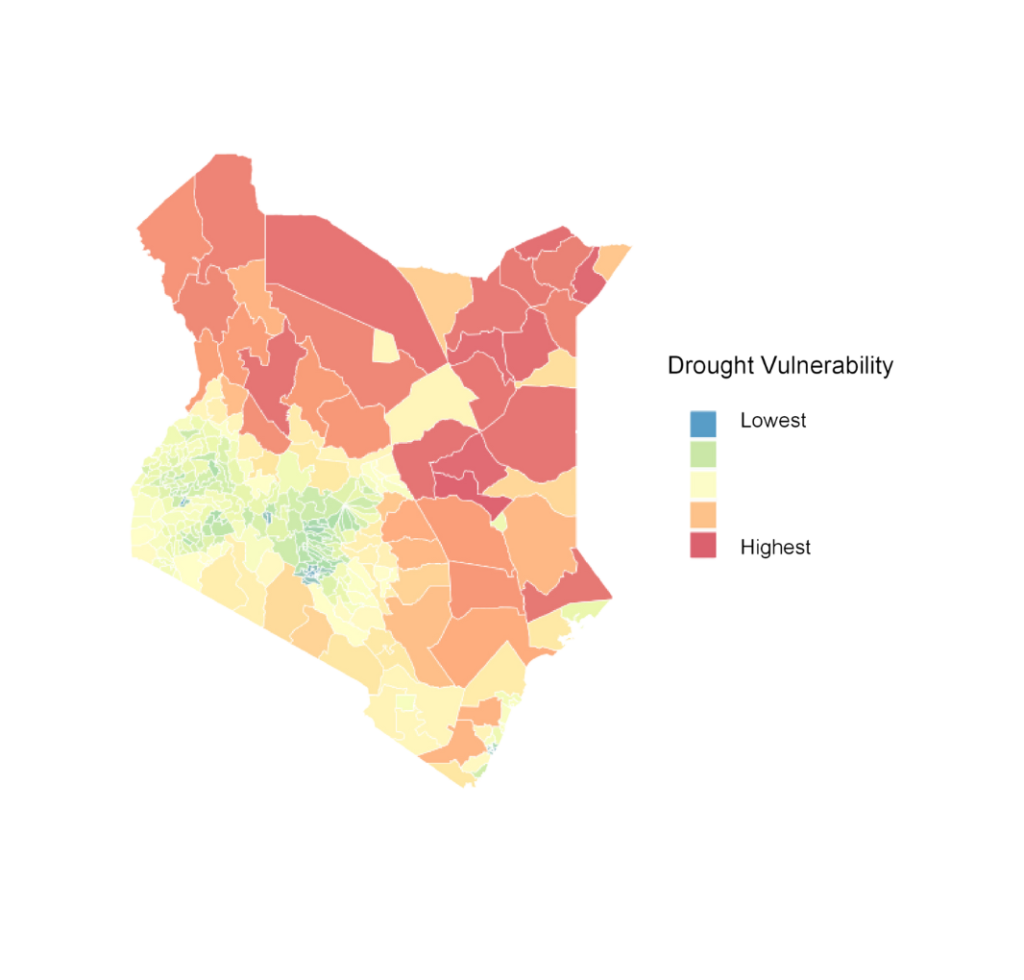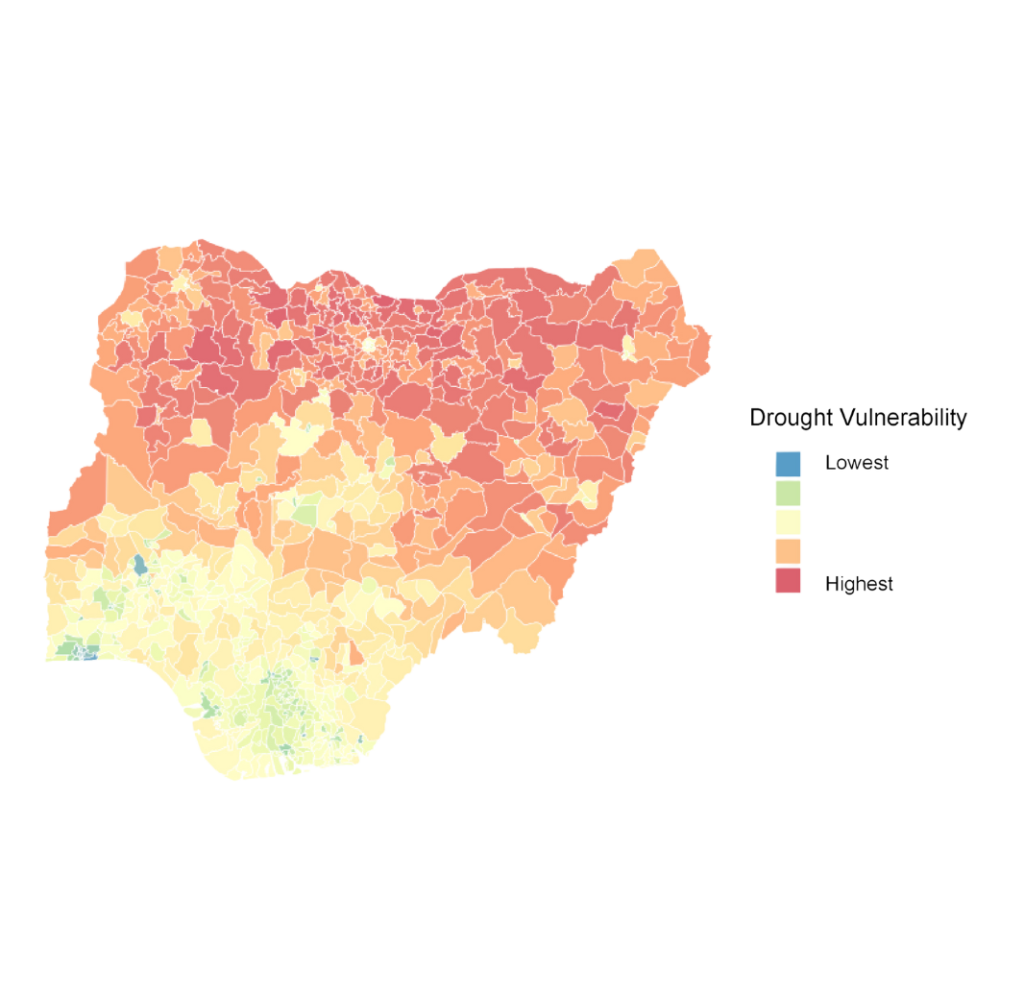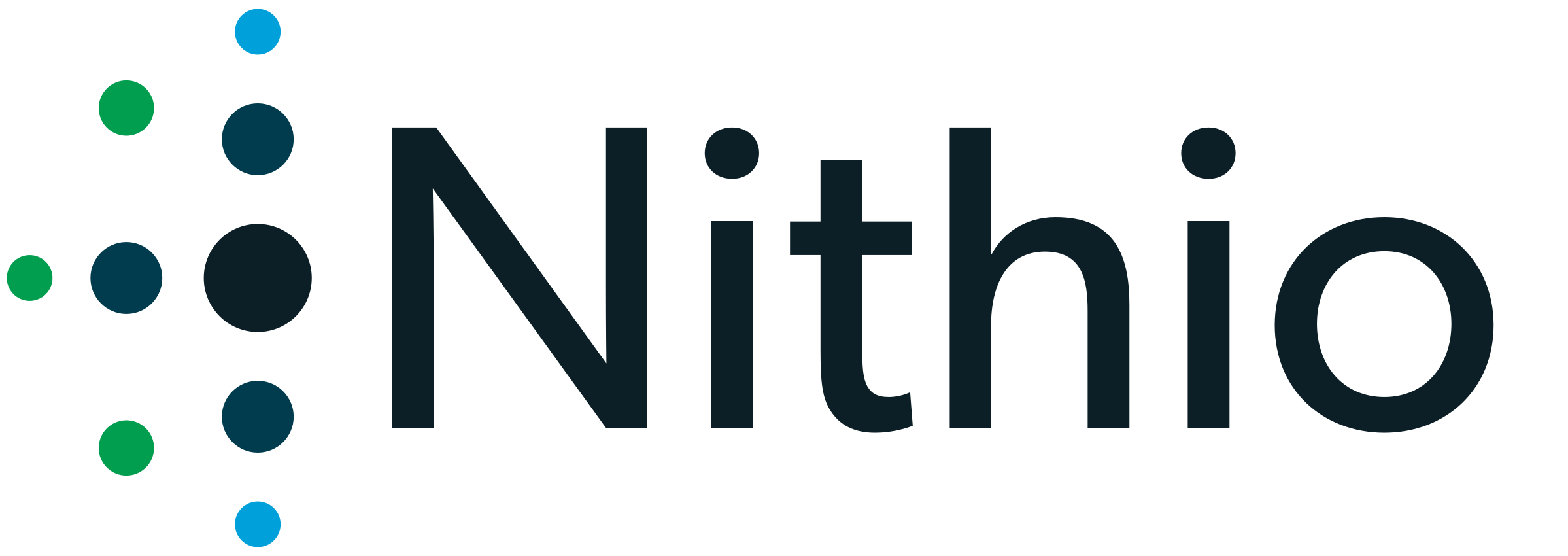There is an urgent need to invest in solutions that build climate resilience across Africa as the continent experiences the rapidly accelerating impacts of climate change. For example, over 61 million people (28%) in Northern Nigeria and 6 million people (12%) in Kenya are living in high-risk drought areas, resulting in food insecurity and an increased cost of living. It is critical to map vulnerability at a localized level to determine which solutions and financing structures work best to sustainably build resilience.
Nithio’s Climate Vulnerability Index (CVI) was created to highlight both climate risks and investment impact potential in climate-vulnerable communities. The CVI is a geospatial measurement tool that assesses the susceptibility of communities to the compounding effects of extreme weather conditions and socioeconomic disadvantages.
It serves to inform and scale financing by helping investors understand how best to reach climate-vulnerable communities with tailored clean energy, agriculture, and financial inclusion products that build resilience. The CVI is used to better understand who is being reached by our financing and can help incentivize more financing for vulnerable communities.
In this blog, Nithio examines the impact of climate vulnerability, specifically addressing the challenges of drought in Kenya and Nigeria, to understand the best approach to reach vulnerable communities.
Goals of Nithio’s CVI
Climate change will affect households throughout the world and across the socioeconomic spectrum, but our research shows that not all areas are equally vulnerable. Climate events like drought, flooding, and extreme heat can exacerbate other challenges, such as water and food insecurity, health issues driven by air pollution and heat, income instability, and interrupted communication. Therefore, it is important to understand where the most vulnerable communities are located and what solutions will be most impactful.
The Climate Vulnerability Index aims to highlight the risks posed by climate change in vulnerable communities by identifying the most susceptible areas. The CVI helps us understand who is reached by our financing and can incentivize more financing for vulnerable communities.
How Nithio’s CVI Works
Nithio’s CVI considers various dimensions of climate change, including the risk of drought, flooding, and extreme heat. To calculate an area’s relative vulnerability to these events in the future, the index uses data on projected climate scenarios predicted using the highly respected General Circulation Models (GCMs) and Shared Socioeconomic Pathways.
As poverty makes resilience to climate change even more challenging, the index also layers each climate dimension with community-level data on socioeconomic factors, such as wealth levels, access to financial services, and dependence on agricultural-related jobs. This combined view, down to the 10 sq. km level, helps us identify the areas that are truly most at risk. Today, we spotlight one climate dimension–vulnerability to drought–and how it plays out in two markets key to Nithio’s work, Kenya and Nigeria.
Case Study: Drought Vulnerability in Kenya – Impacting Livelihoods
We can use Nithio’s CVI to look at the impacts of vulnerability to drought, exacerbated by climate change, in Kenya. This has affected people’s livelihoods, access to clean water, livestock health, ability to access education, and other social services. For example, sub-counties like Balambala, located in the arid heartland of Garissa County in the northeastern region of Kenya, have experienced harsh living conditions due to persistent drought. Women and children must travel over 10 kilometers to access water, causing young boys and girls to miss school. Additionally, there’s a shortage of food for livestock, forcing herders to travel a longer distance to graze. These challenges, along with acute food shortages and increased security concerns within households, will be compounded as climate change worsens and droughts become more prolonged and severe. To improve the quality of life in this region, targeted funding is required to address the situation and build resilience for the future at the household level. This includes increasing access to solar water pumps, solar household products, and cold storage fans. These initiatives aim to reduce the time spent accessing essential services such as water and electricity.

Zooming into Kenya, Nithio’s CVI takeaways include:
- Nearly 12% (6 million people) of the population live in areas with the highest vulnerability to drought-oriented climate change. Balambala, Lafey, and Lagdera in the northern part of the country are among the most vulnerable areas.
- Currently, only 3% of households in Nithio’s investment portfolio live in these areas.
- Populations in the most vulnerable areas do not have access to products that would help them adapt to climate change.
- We see a correlation with areas that may be considered non-commercially viable due to economic, security, and logistical challenges.
- This highlights the need for targeted catalytic funding to address these underlying challenges and incentivize companies to reach these areas and vulnerable customers.
Case Study: Drought Vulnerability in Nigeria – Exacerbating Food Insecurity
Northern Nigeria has a higher reliance on agricultural livelihoods compared to the rest of the country, with 84% of households in the northeast engaging in crop production and 69% raising livestock. Nationally, the 19 Northern States produce 15% more agricultural products compared to other regions.
Climate change in this region has led to a series of adverse events, including cycles of long-term drought and widespread flooding in northeast Nigeria. These conditions have resulted in desertification and a shortage of land for livestock. These effects exacerbate food insecurity and resource-based conflicts in the most vulnerable states, like Borno, Adamawa, and Yobe states, as well as other parts of Northern Nigeria.
These challenges have severely impacted Nigeria’s food system, leading to price spikes that affect food affordability, especially among vulnerable populations. Food inflation rose to 26.33% in October 2023 due to increased weather fluctuations and the devaluation of the Nigerian naira. There is an urgent need for investment in climate adaptation products, such as solar water pumps, to aid irrigation, reduce reliance on dirty fuel generators or an inconsistent grid, and mitigate the effects of drought. According to Nithio’s CVI, 24% of the population resides in drought-high-risk areas, while only 0.6% of customers in Nithio portfolio companies are vulnerable to drought.

Zooming into Nigeria’s CVI takeaways, we see:
- 28% (61 million people) of the population resides in high-risk drought areas, resulting in food insecurity and an increased cost of living.
- Borno, Adamawa, and Yobe in the northern part of the country are among the most vulnerable areas impacted, which, according to the OCHA Nigeria Situation Report, has a significant impact on driving insecurity.
- Only 0.6% of Nithio portfolio companies’ customers are from this region, underscoring the need for incentives to reach the more vulnerable households.
- Smallholder farmers in high-risk areas lack access to crucial products like solar irrigation pumps. Implementation of productive appliances and access to solar irrigation pumps can improve the population’s quality of life, as the Northern region produces 15% more agricultural products compared to the rest of the country, making investment in the region crucial for overall food security.
Financing climate adaptation is not one-size-fits-all and requires a tailored approach to ensuring products that build resilience are accessible to all – especially the most vulnerable households. Nithio CVI helps us understand who is reached by our financing and can incentivize more financing for vulnerable communities. To learn more about the Climate Vulnerability Index, please reach out to the Nithio team at solutions@nithio.com.


Recent Comments